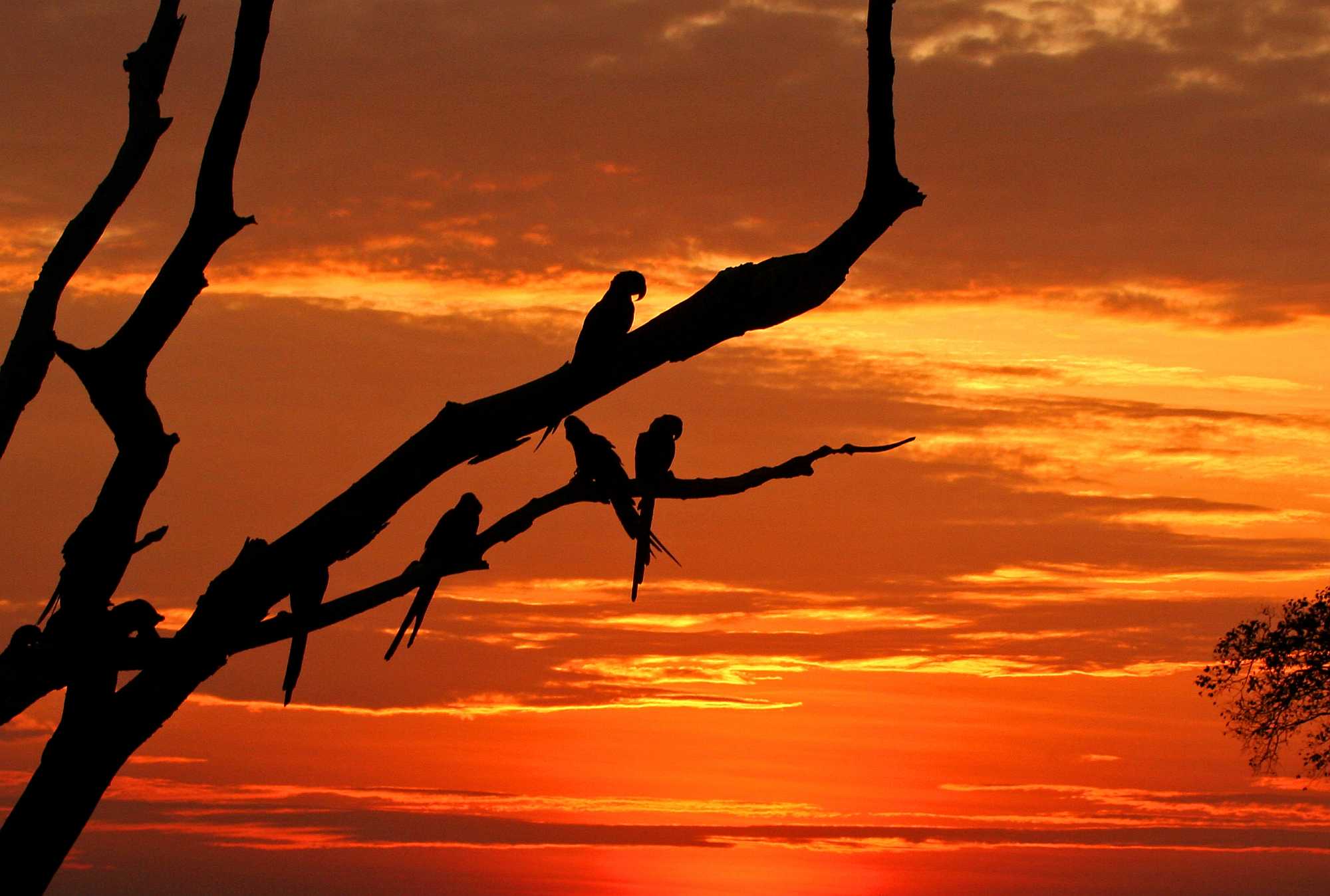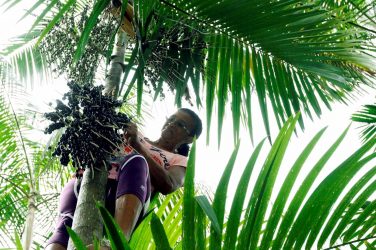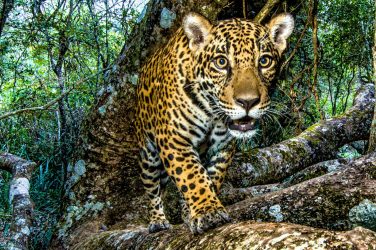In the 1960s, Luiz de Figueiredo Barretto bought the São Francisco do Perigara farm, in Brazil’s Mato Grosso state, to use as a cattle ranch. Since then, however, some 95% of the more than 24,300-hectare (60,000-acre) site has been conserved.
When Barretto realized that a specific part of the property, the size of a city block, was a meeting place for hyacinth macaws, also known as blue macaws (Anodorhynchus hyacinthinus), he closed off the area to protect the trees. Over the years, the small piece of forest has become unique in the world: a spot where dozens of hyacinth macaws gather to rest every afternoon.
Ornithologist Pedro Scherer-Neto has been conducting population surveys of the hyacinth macaw here for 15 years now, during which time the average number of individual birds has gone from 234 to 708. Sightings peaked between 2013 and 2015, when more than 1,000 of the birds were observed in the same place.
The hyacinth macaw, the largest member of the Psittacidae family of parrots, is considered vulnerable, a “threatened” category on the IUCN Red List, but in 2014 was omitted from Brazil’s national list of threatened species.
With this year’s historic drought and dramatic increase in wildfires in the Pantanal wetlands, the São Francisco farm was also hit: more than half of the property was burned. Unlike in the Amazon, fires sparked by lightning are a natural occurrence in the Pantanal during the wet season.
But in the dry months, which start in July, the fires are caused by human action: when someone burns garbage or clears land for planting, the embers may spread and start major fires. Efforts are now underway to prevent the flames from advancing and destroying the refuge of the hyacinth macaws. A team of volunteer firefighters is standing guard at the farm, monitoring it 24 hours a day.
Ana Maria Barretto inherited the farm along with her sister, Maria Ignez Marcondes Barretto, from their father. She said the fire started outside the farm. “We tried to control it on our own with the help of neighbors, but we couldn’t. The fire spread painfully and dramatically,” she said.
She added that help came from several sources: neighbors, the SESC Pantanal private reserve, the fire department, community volunteers, and others. “They are doing all they can and much more. The area is large and man’s struggle against fire is difficult. These are times of desperation,” Barretto said.
Sharing space with the farm’s cattle has provided important advantages for the macaws. During the day, the birds, mostly juveniles not yet of reproductive age, follow the cattle through the fields in search of food. They pick through the cattle droppings for acuri nuts, which the cows’ digestive process renders easier to crack and open. They also feed on bocaiúva nuts, which they can eat directly off the tree.
In the late afternoon, hundreds of the birds can be seen on the pasture next to the cattle. The Pantanal is characterized by extensive livestock farms and is known as Brazil’s most protected biome. About 86% of it is preserved, of which 90% is private property, according to Embrapa, the federal agriculture research institute.
The Arara Azul Institute has been monitoring hyacinth macaw nests in the area since 2005: 30 natural ones plus 20 artificial ones installed in 2010. The institute says there are also several cavities in formation, mostly in manduvi trees. Since it began its monitoring, more than 60 macaws have been born on the property.
According to biologist Neiva Guedes, founder of the Arara Azul Institute, the area’s vegetation can recover from the fires, but the relationships between species are more sensitive. “Visually, the environment may look healthy and green, but that doesn’t mean everything is fine. It may take years to reestablish relationships between species,” she said.
São Francisco do Perigara remains hugely important to the conservation of the hyacinth macaw. Sightings of more than 1,000 of the birds in just this one place indicate that it’s home to 15% of the global population, and 20% of the Pantanal’s hyacinth macaws.
The ranch is so unique that it was the object of an article published last year by ornithologist Pedro Scherer-Neto with biologists Neiva Guedes and Maria Cecília Barbosa Toledo.
According to the authors, in areas where natural habitat is threatened by fire, agriculture, livestock and human occupation, group resting places have become important refuges for threatened species.
Gregarious behavior protects birds against predators and makes their search for food more efficient. “With this number of macaws, there’s no place like this. All the macaws in the region come to sleep on the farm,” Guedes said.
This is the second consecutive year in which the Pantanal has witnessed dramatic scenes of burning. Although fire is part of the ecosystem cycle, the situation has grown out of control as a result of the combination of climate factors and human action.
Felipe Augusto Dias, executive director of the SOS Pantanal Institute and a member of the Nature Conservation Experts Network, said some measures are needed, including investment in raising the population’s awareness.
“We have reached a level of extreme drought, and chances are it will continue,” he said. “We have to understand how to face it to reduce the consequences of these biodiversity losses.”
Translated by Roberto Cataldo.
This article appeared originally in Mongabay – https://news.mongabay.com














